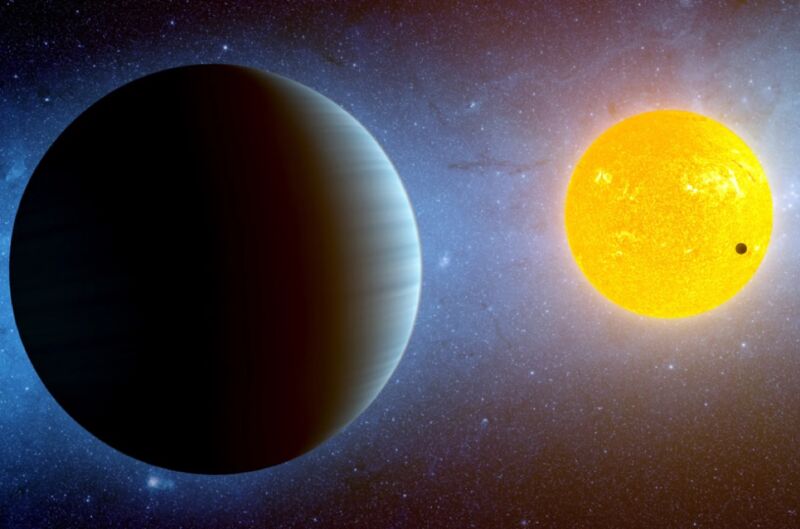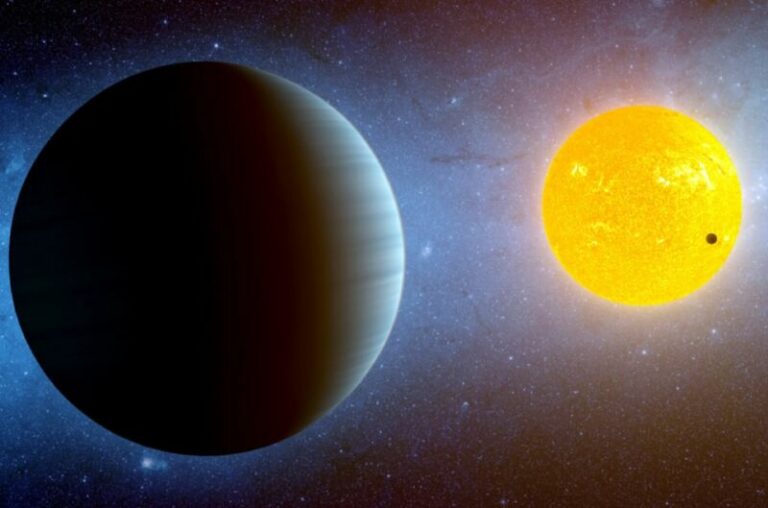Astronomers Discover Earth-Sized Exoplanet with a Lava Hemisphere and Extreme Heat
Additionally, a distinct group of researchers discovered a diminutive, frigid exoplanet accompanied by a substantial outer partner.
Yesterday, at a meeting of the American Astronomical Society in New Orleans, co-authors Benjamin Capistrant from the University of Florida and Melinda Soares-Furtado from the University of Wisconsin-Madison presented the details of an intriguing discovery. Astronomers have found an extraordinary exoplanet, similar in size to Earth, which they believe possesses a hemisphere covered in molten lava. Astonishingly, the other hemisphere of this exoplanet is tidally locked, perpetually shrouded in darkness. The findings have been published in The Astronomical Journal. Additionally, another group of researchers published a paper in the journal Astronomy and Astrophysics today, describing the detection of a rare, small, cold exoplanet accompanied by a massive outer companion, approximately 100 times the mass of Jupiter.

The Kepler mission has provided us with an extensive collection of exoplanets, granting us valuable insights into their characteristics, such as their orbital positions and prevalence. However, our understanding of the conditions on these planets remains limited. While Kepler can determine a planet’s size, it cannot discern its composition. Planets located within the “habitable zone” around stars could exhibit a wide range of conditions, from scorching infernos to frozen wastelands.
To address this knowledge gap, the Transiting Exoplanet Survey Satellite (TESS) was launched with the purpose of unraveling the true nature of exoplanets. TESS is specifically designed to identify planets orbiting nearby, bright stars, enabling subsequent observations to determine their compositions and potentially unveil details about their atmospheres.
Kepler and TESS both utilize the transit method to detect planets. This method is effective for systems where the planets orbit in a plane that brings them between their host star and Earth. During this process, the planet obstructs a small portion of the starlight visible from Earth or nearby orbits. If these periodic decreases in light occur, it indicates the presence of an orbiting object.
This information provides insights into the planet. The frequency of the light decreases indicates the duration of an orbit, which in turn reveals the distance between the planet and its host star. When combined with the brightness of the host star, it allows us to determine the amount of incoming light the planet receives, influencing its temperature. The range of distances where temperatures are suitable for liquid water is known as the habitable zone. Additionally, by analyzing the extent of light blockage, we can estimate the size of the planet.
However, to gain a comprehensive understanding of other planets and their potential to sustain life, we need to ascertain their composition and atmospheric characteristics. Although TESS does not directly address these questions, it is designed to identify planets using other instruments that could provide the answers.
Do not forget to share your opinion with us to provide you with the best posts !




0 Comments